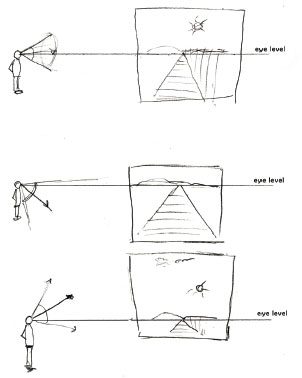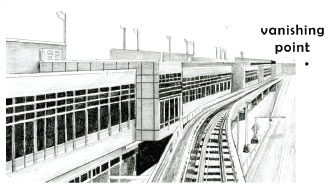Perspective drawing is structured around these two concepts.
They are crucial to making objects look like they are diminishing into the distance at an accurate rate …
… making planes appear to converge as they retreat from the viewer, and showing that planes foreshorten as they twist towards the viewer. But what are vanishing points and how do you find the horizon line?
The farther we are from an object, the smaller it will appear to be. Lines that we know are in reality parallel to each other, like the sides of a house, seem to slant together, or converge.
If you followed the angle of those slanting lines until they crossed at a point, you will have found the vanishing point for those lines.
The easiest way to find a vanishing point, therefore, is to simply point in the direction the lines are slanting.
Each set of parallel lines that is adjacent to the observer’s face will have it’s own special vanishing point, but matter which direction it faces, that vanishing point will still be on the horizon line.
This is because the horizon line is equivalent with eye level, which remains constant for the entire picture plane.
Want To Learn More…

Or in simple words, it’s how you make your drawings look real!
You have to study it and know the principles if you have any chance at all of bringing our drawings to life.
Learning perspective is a fundamental element that you need to master before you can draw like a true professional.
The good news is that Perspective Mastery is generously illustrated showing you step-by-step how to make your drawings come to life.
With clear (and fun) instructions on how to draw … you’ll learn at your own pace in the comfort of your home.



